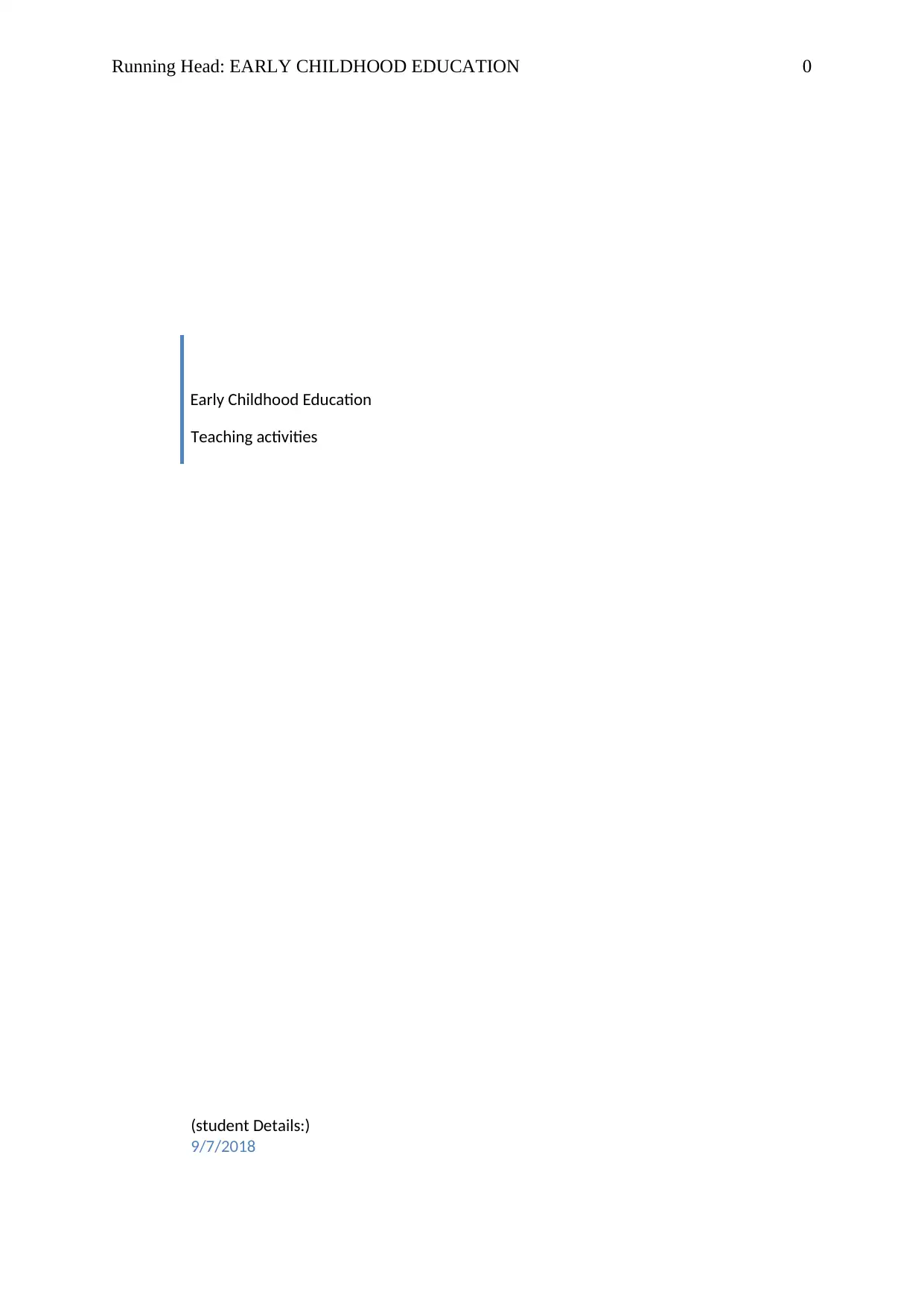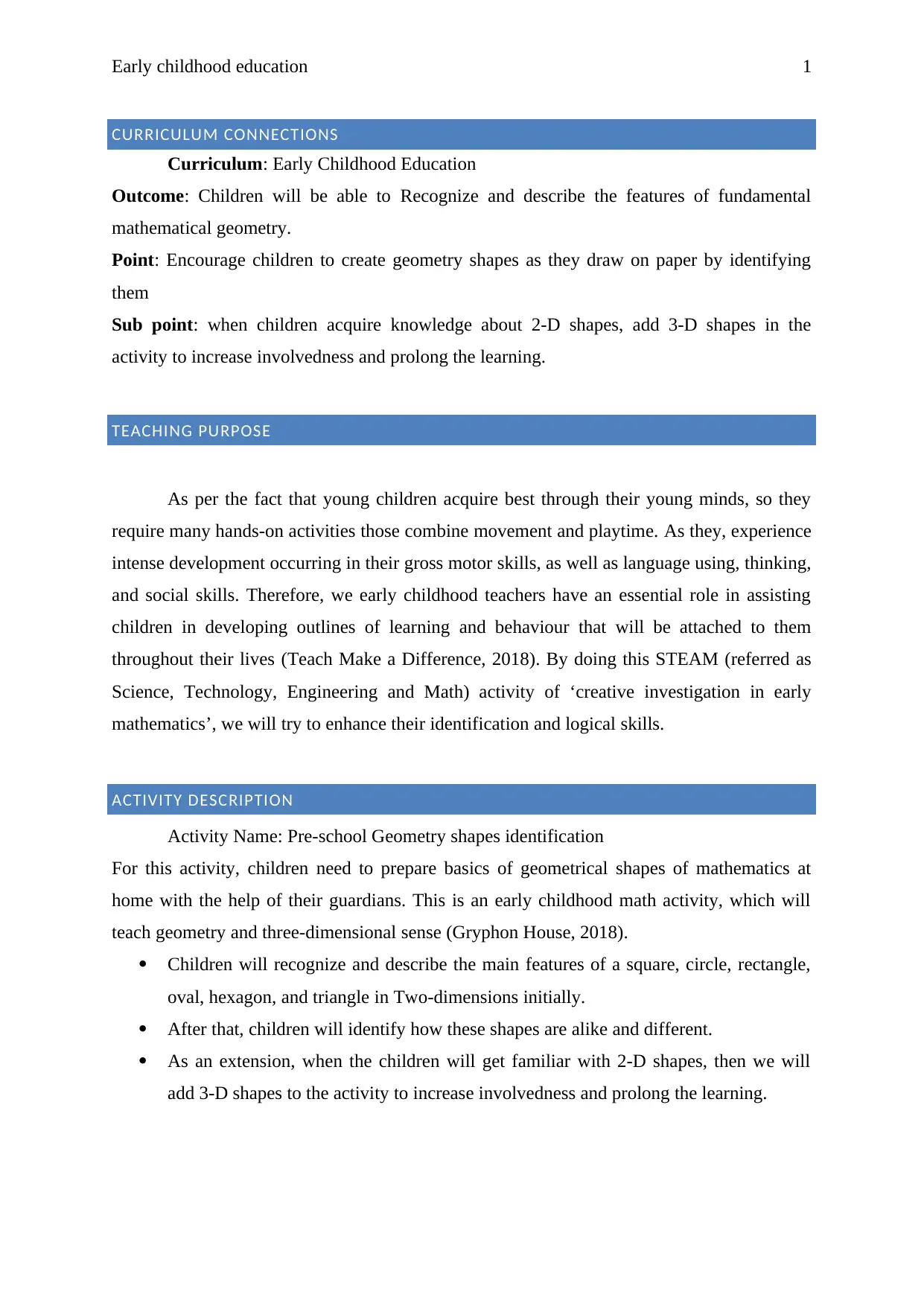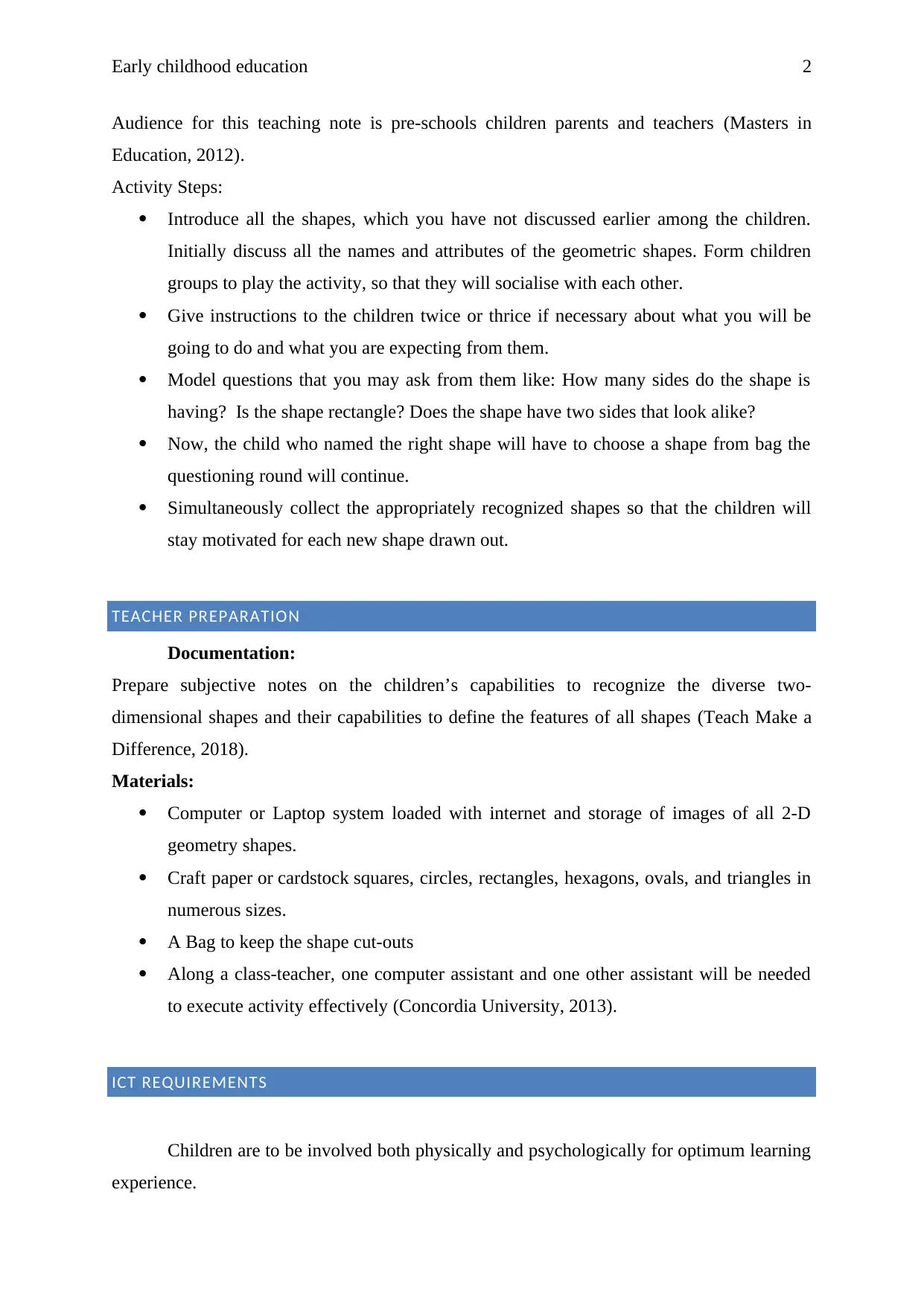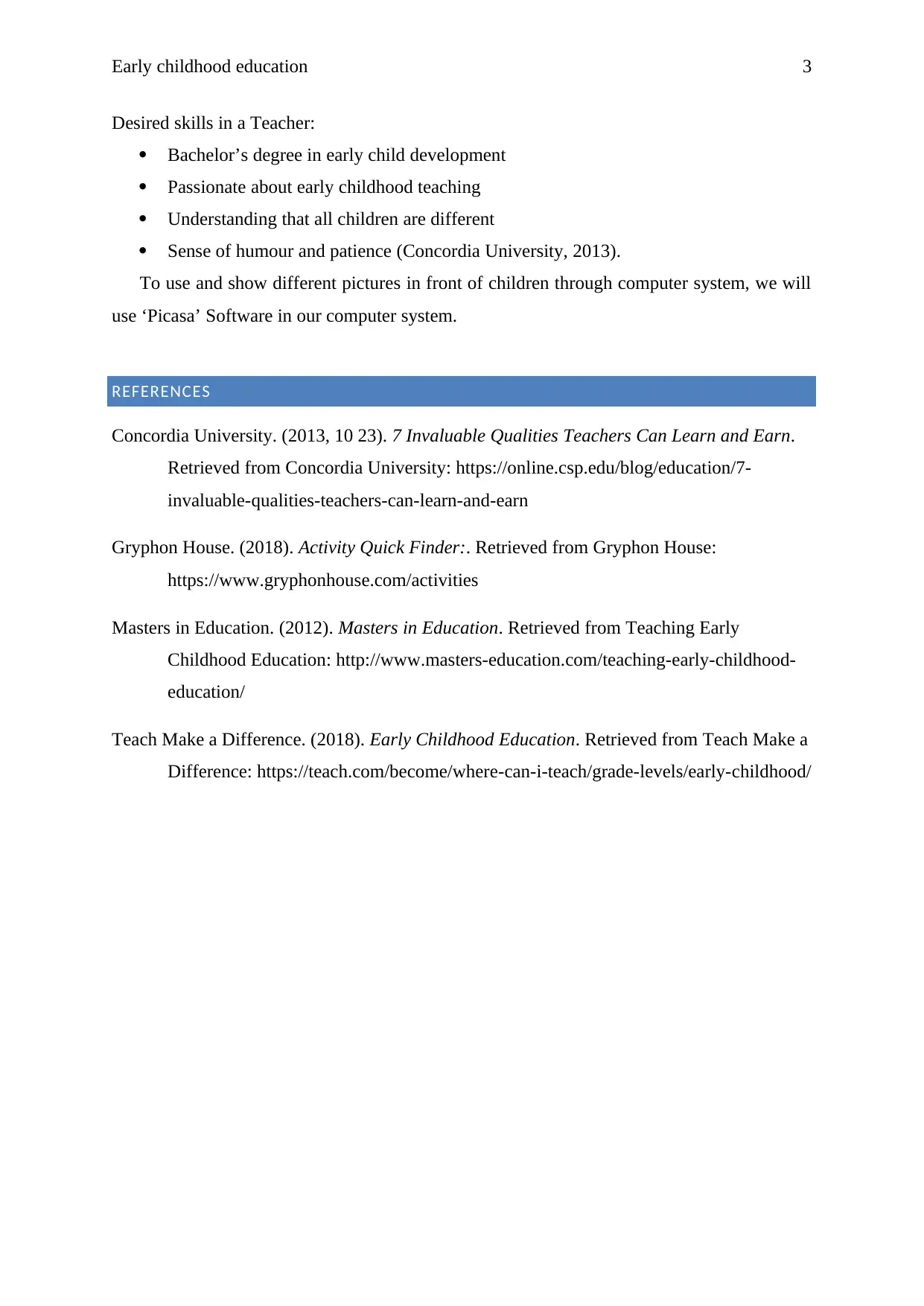Early Childhood Education: Identifying Geometry Shapes Activity
VerifiedAdded on 2023/06/07
|4
|813
|266
Practical Assignment
AI Summary
This practical assignment outlines a STEAM activity designed for early childhood education, focusing on geometry shapes identification. The activity aims to help children recognize and describe the features of fundamental mathematical geometry, starting with 2D shapes like squares, circles, rectangles, ovals, hexagons, and triangles, and progressing to 3D shapes. The teaching purpose emphasizes hands-on activities that combine movement and playtime, crucial for young children's development of gross motor skills, language use, thinking, and social skills. The activity involves children preparing basic geometrical shapes at home with their guardians and then participating in a class activity where they identify and differentiate the shapes. Teacher preparation includes documenting children’s capabilities, gathering materials like craft paper shapes and a computer with images, and ensuring adequate assistance. The activity leverages ICT by using software like Picasa to display images and requires teachers with a bachelor’s degree in early child development, passion for teaching, understanding of individual differences, and patience.
1 out of 4











![[object Object]](/_next/static/media/star-bottom.7253800d.svg)